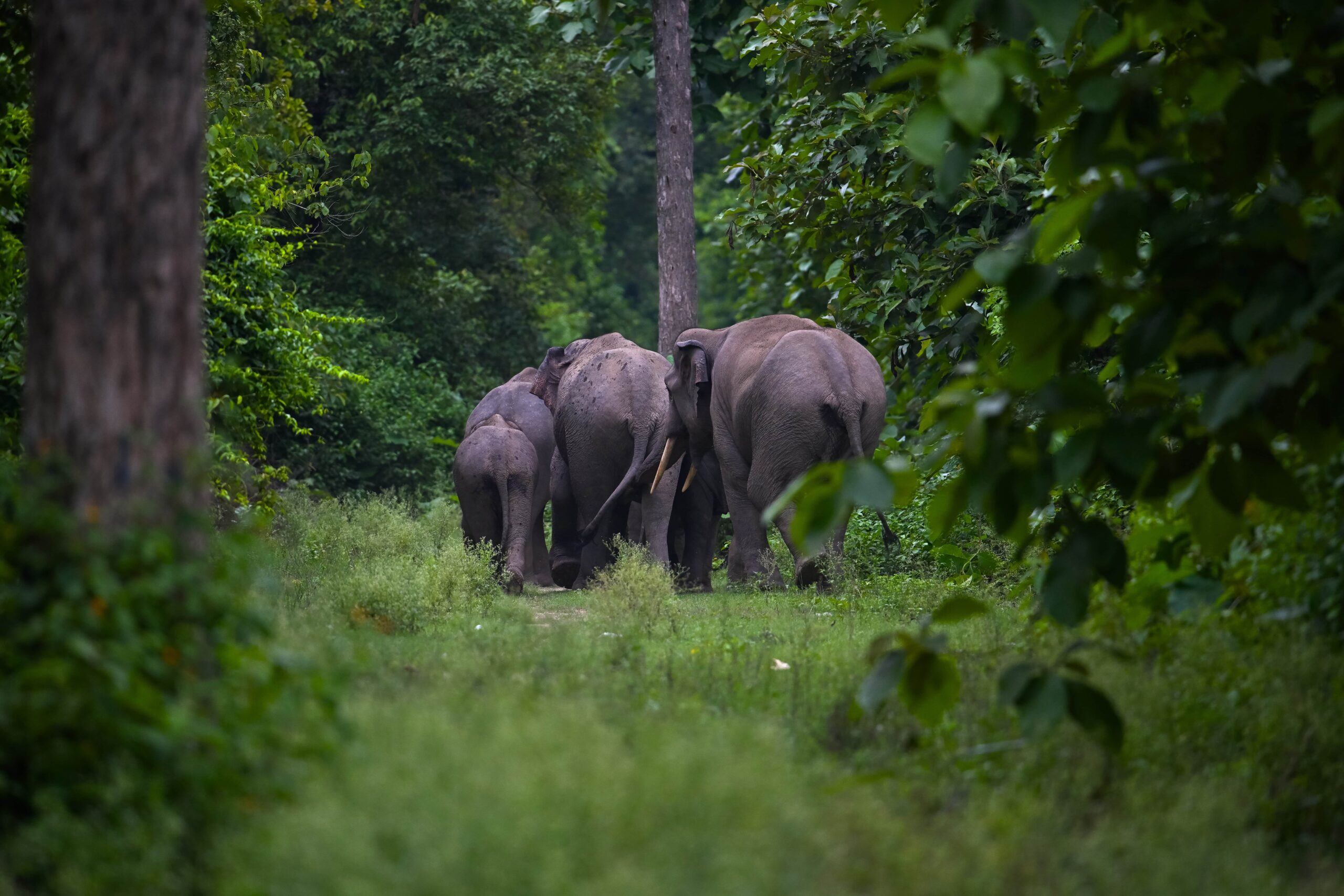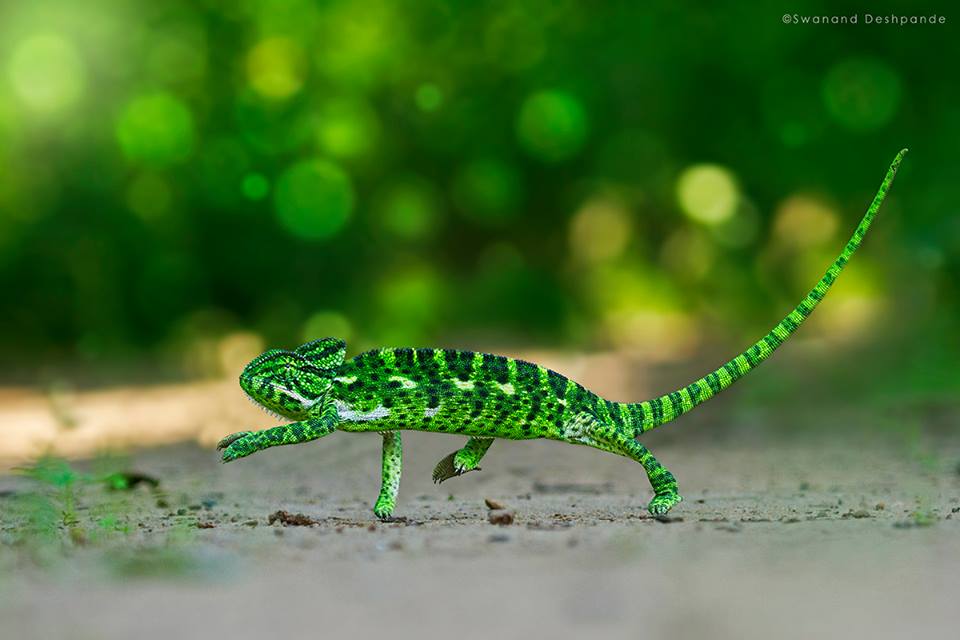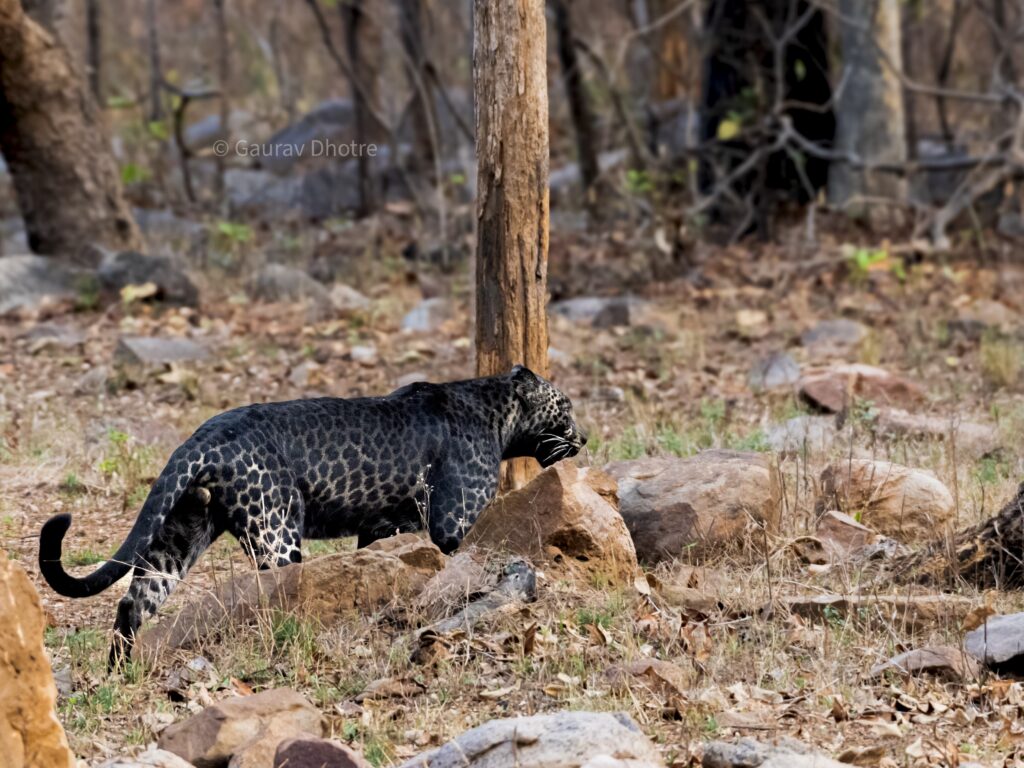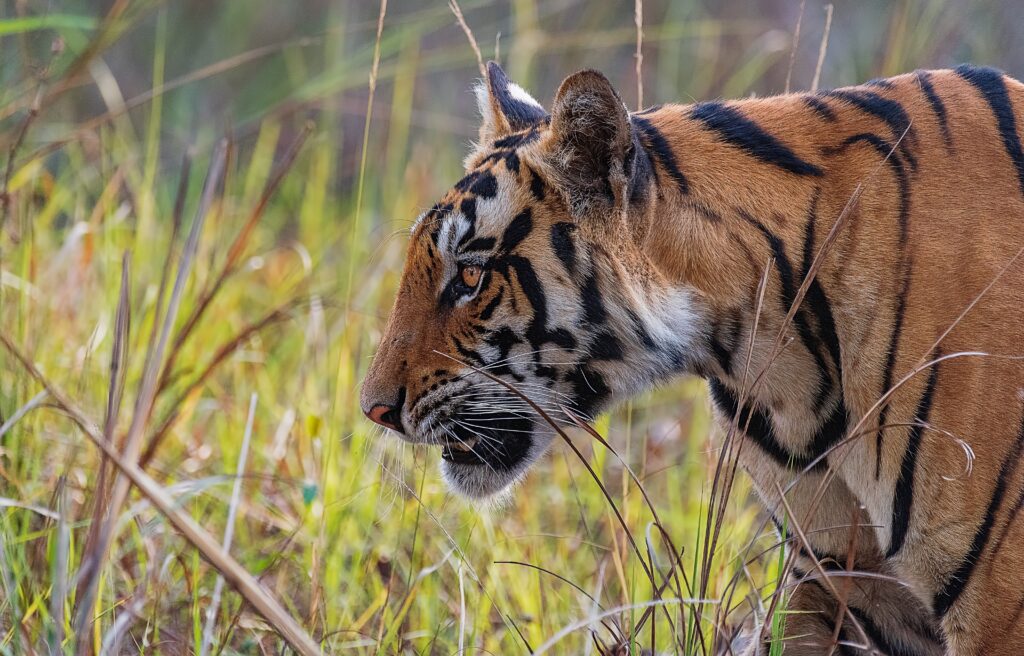DIFFERENCE BETWEEN ASIATIC & AFRICAN ELEPHANTS
Elephants are the largest land animals on Earth, and they symbolize strength and wisdom. While they may look similar, the two main types—Asiatic and African elephants—are quite different in many ways.
Knowing these differences helps us appreciate these amazing creatures and the role they play in nature.
In this blog, we’ll explore the physical and behavioral differences between these two species, where they live, and the challenges they face today.
Introduction to the Two Main Types of Elephants
1. African Savannah Elephant (Loxodonta africana)
The largest of all elephants, it inhabits the grasslands and savannah across sub-Saharan Africa.
2. Asiatic Elephant (Elephas maximus)
Found in the forests and grasslands of South and Southeast Asia, including India, Sri Lanka, and Indonesia. It is slightly smaller than its African counterpart.

1. Physical Differences
These two species can be easily told apart by looking at their physical traits.
A. Size
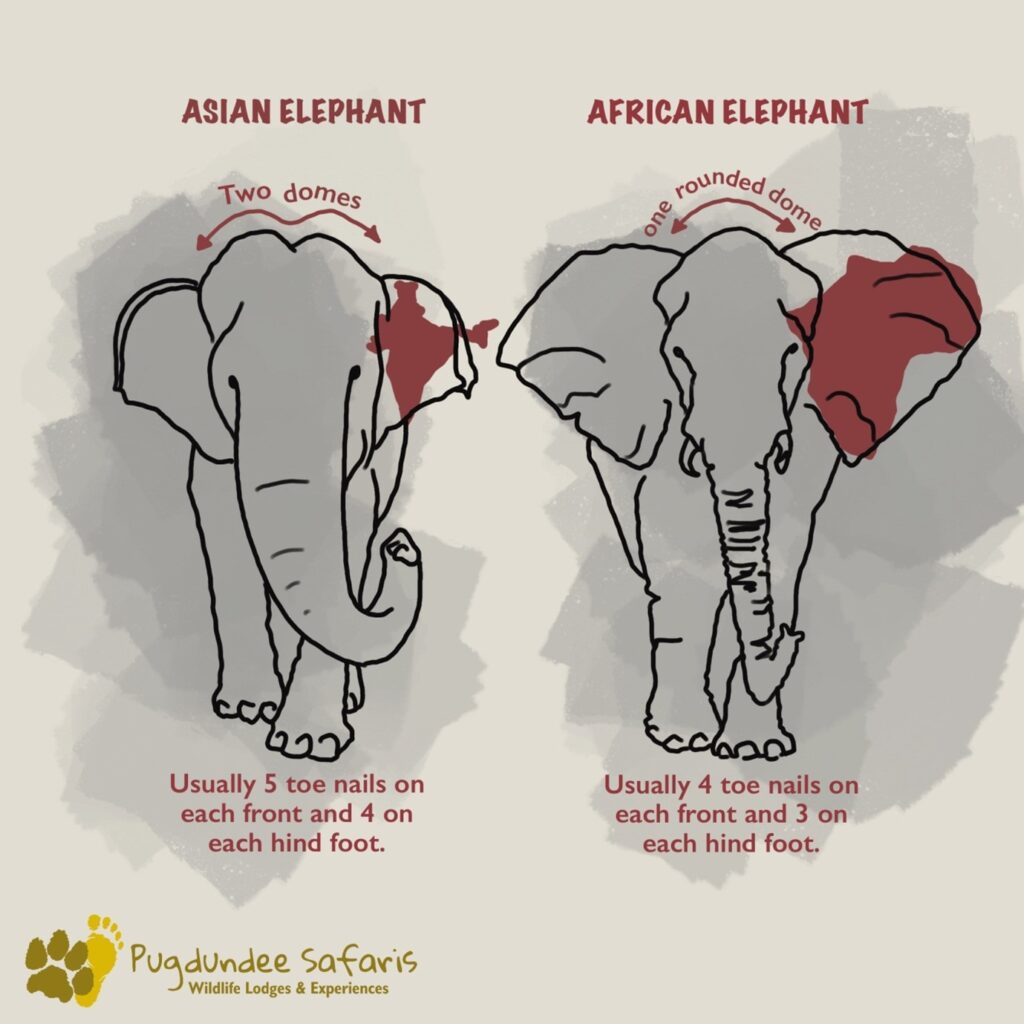
African Elephants are larger.
The African Savannah elephant can stand up to 13 feet tall at the shoulder and weigh over 6,000 to 8000 kg.
Asiatic Elephants are smaller
These elephants are smaller with males growing up to 9-10 feet tall and weighing around 4,000 to 6,000 kg.
B. Ears
African Elephants have large, fan-shaped ears
These help them stay cool by releasing heat. These ears are so big they resemble the shape of Africa.
Asiatic Elephants have smaller, rounded ears
Since they live in forests and shaded areas, they don’t need large ears to cool down.
C. Tusks
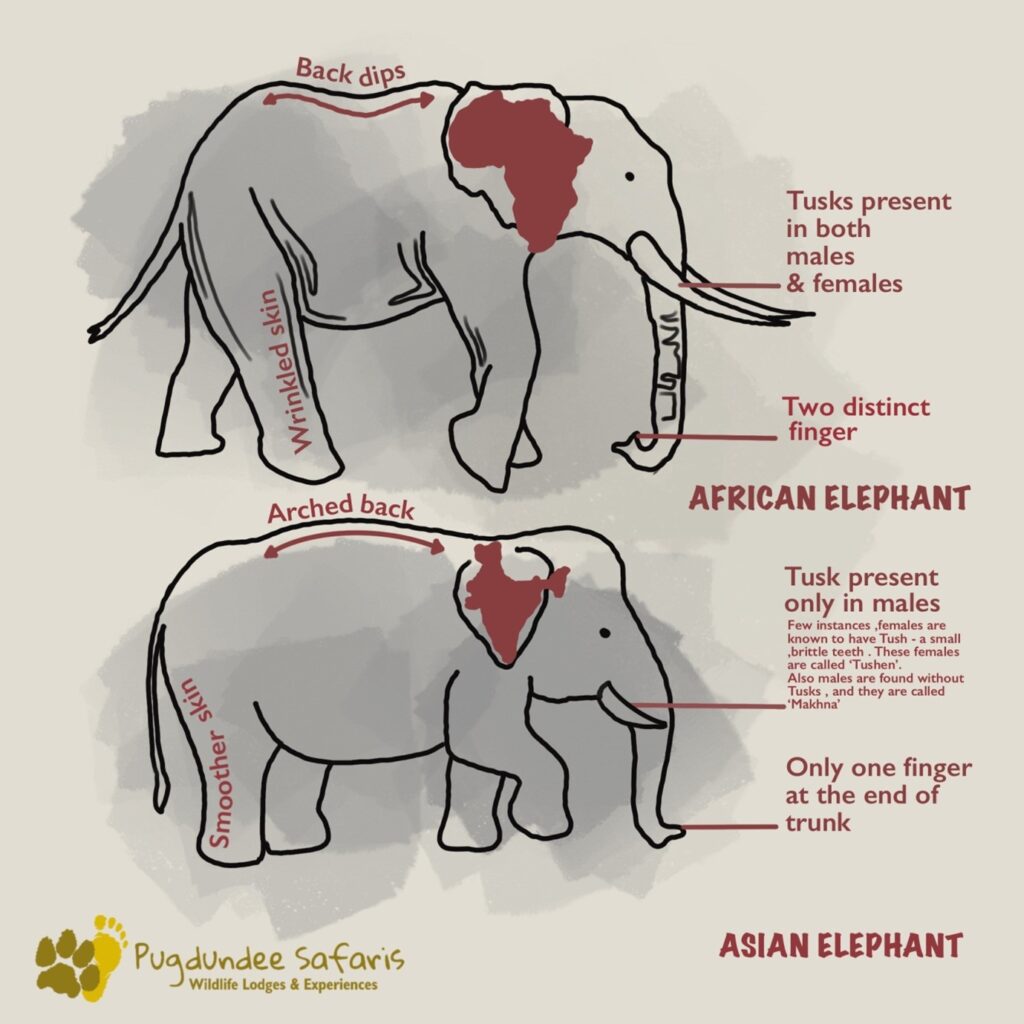
In African Elephants, both males and females have large, curved tusks
These tusks are used for digging, foraging and defense.
Asiatic Elephants are different, only the males have tusks
And some males don’t have them and known as “ Makhnas “ Female Asiatic elephants usually have small or no tusks, which are called “tushes.”
D. Head and Trunk
African Elephant
They have a more rounded head with a single dome, while their trunks have two fingers at the tip.
Asiatic Elephant
They have a twin – domed head , with a clear forehead bump, and their trunk has only one finger at the tip.
E. Skin
African Elephants have more wrinkled and thicker skin
This helps them retain water in dry climates.
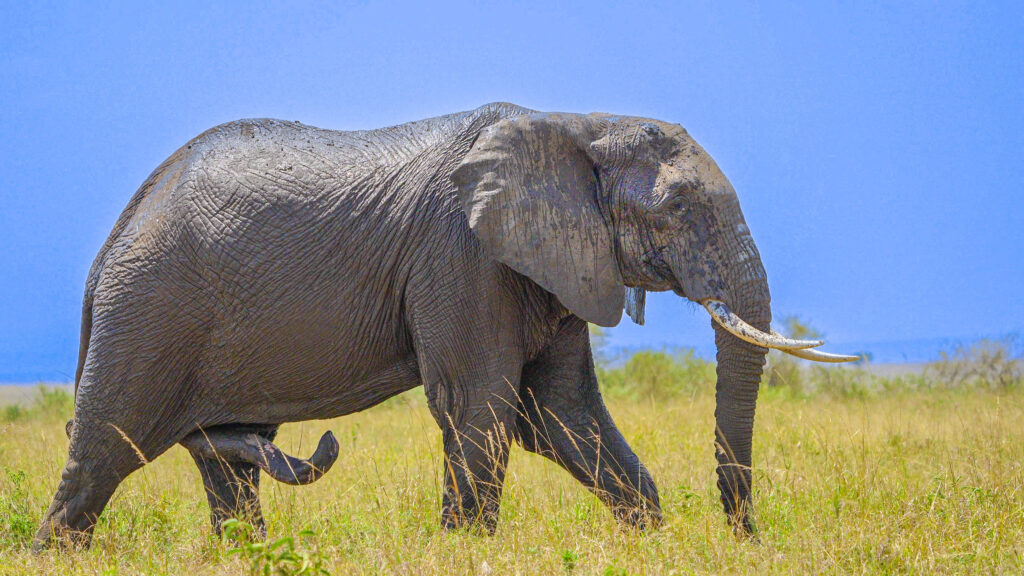
Asiatic Elephants have smoother, thinner skin,
Since they live in more humid areas.
2. Behavioural Differences
Both species are highly social and intelligent, but they behave differently in certain ways.

A. Social Structure
Both types live in herds led by older females.
However, African elephant herds are often larger, with many family groups coming together. Asiatic elephant herds are generally smaller. Male elephants usually leave the herd when they grow up. Male African elephants often form groups of males, while male Asiatic elephants prefer to live alone.
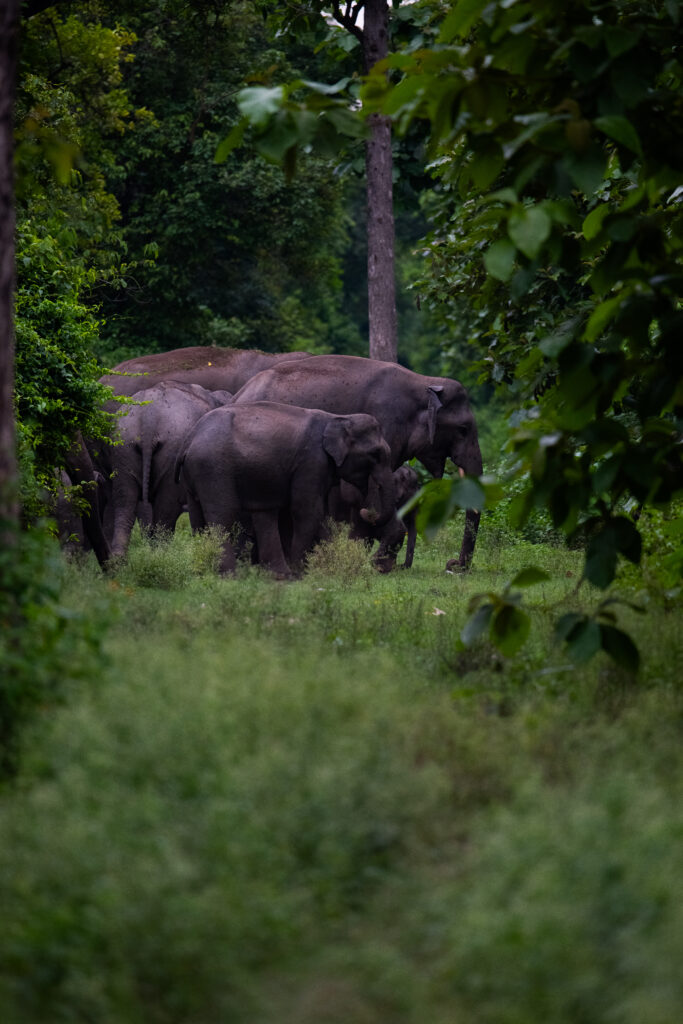
B. Communication
Elephants communicate with each other in various ways, including sounds, body language, and vibrations through the ground (infrasound).
African Elephants, especially in open landscapes, use infrasound to send signals across long distances. Asiatic Elephants communicate similarly but are better at making sounds that carry through dense forests like Trumpet, Roar.
C. Diet
Both elephants are herbivores (plant-eaters), but their diet depends on where they live
African Elephants eat a mix of grasses, leaves, fruits and bark. Asiatic Elephants are more browsers, meaning they eat more bark, roots, leaves, and fruits from trees and shrubs.
3. Habitat and Distribution
Elephants play an important role in their ecosystems, and their habitats differ depending on the species.
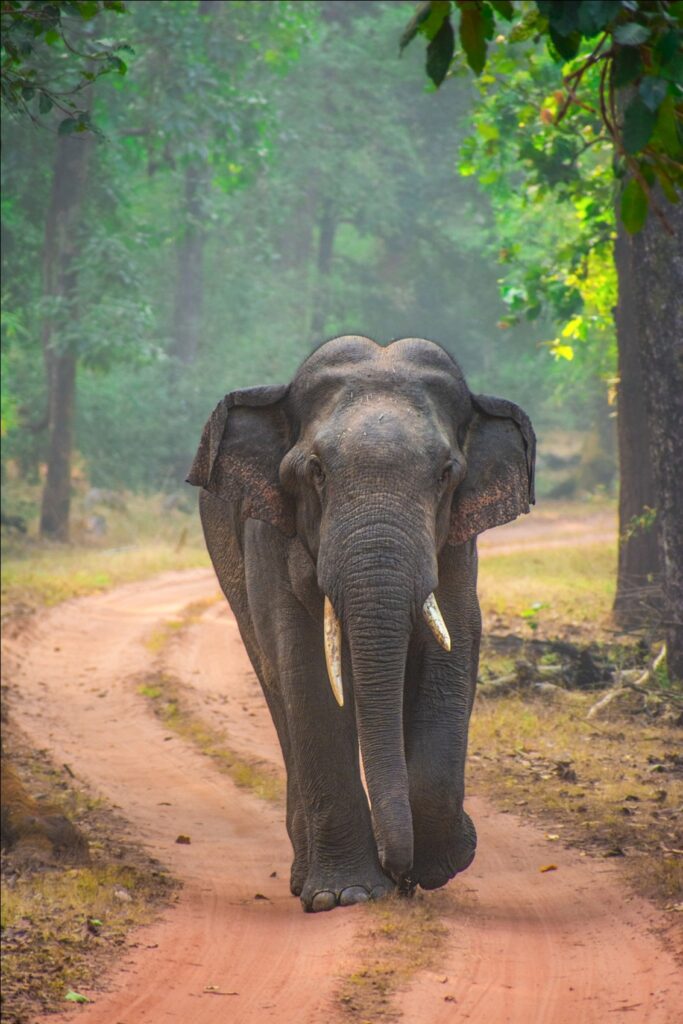
African Elephant
African Savannah Elephants live in vast grasslands, savannahs, and open woodlands. Their open habitats allow them to live in larger herds and communicate over long distances.
Asiatic Elephant
Asiatic Elephants are found in the tropical forests, grasslands, and scrublands of South and Southeast Asia, including India, Sri Lanka, Nepal, Bhutan, and Thailand.
However, their habitat is more fragmented because of human activities like farming and building roads. Interestingly, a small population of Asiatic elephants migrated to Bandhavgarh National Park in central India a few years ago, expanding their range into this famous wildlife area.
4. Conservation and Threats
Both African and Asiatic elephants face serious threats, but the type and scale of these threats differ.
A. African Elephants
•Poaching for ivory is a big problem for African elephants. Both males and females have tusks, so poachers target them for the ivory trade.
•Habitat loss due to farming, logging, and human expansion also threatens their survival.
•The African elephant is listed as Vulnerable on the IUCN Red List, meaning their populations are decreasing.
B. Asiatic Elephants
•Ivory poaching is less of a threat to Asiatic elephants because fewer males have tusks. However, they face serious challenges due to habitat loss and fragmentation.
•As human populations grow, elephants often come into conflict with farmers. This results in human-elephant conflicts, sometimes leading to the death of both people and elephants.
•Asiatic elephants are listed as Endangered, with fewer safe places to live due to human activities.
5. Cultural Significance
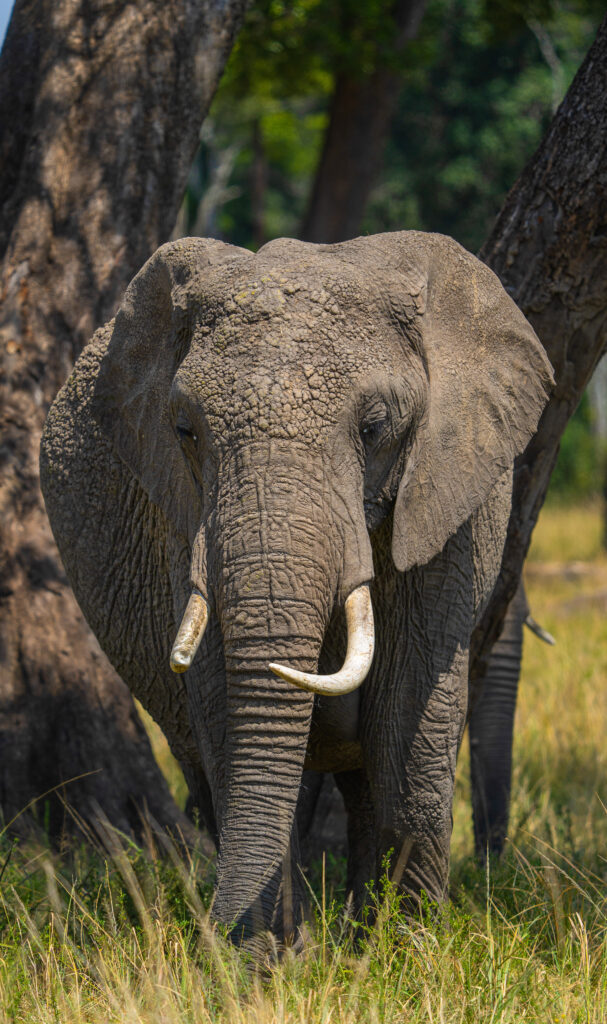
Elephants are culturally significant in both Africa and Asia, but their roles in each culture are different.
•In Africa, elephants are symbols of power and wisdom. Many African cultures revere elephants in their myths and stories.
•In Asia, elephants are often considered sacred. For example, in India, the elephant-headed god Ganesha is a symbol of luck, wisdom, and prosperity.
Brief Note
While this blog focuses on the African Savannah and Asiatic elephants, it’s important to acknowledge a third species: the African Forest Elephant. These elephants inhabit the dense tropical forests of Central and West Africa. They are smaller than their savannah relatives, with thinner, straighter tusks and more rounded ears. While they share many traits with the African Savannah Elephant, they are particularly adapted to forest life, making them more elusive and difficult to observe. Some of their behaviours are similar to those of Asiatic elephants, as they also feed on fruits and live in dense forests. In addition, their size is quite similar to Asiatic elephants, and they have smaller tusks compared to their African cousins.
While Asiatic and African elephants may look similar, they are quite different in many ways. Their size, tusks, ears, and even their social behaviours vary based on the regions they live in. Understanding these differences is crucial for protecting them, as each species faces unique challenges. African elephants are targeted for their ivory, while Asiatic elephants struggle with habitat loss and conflicts with humans.
Written by Vishal Sharma, Naturalist at Pugdundee Safaris

